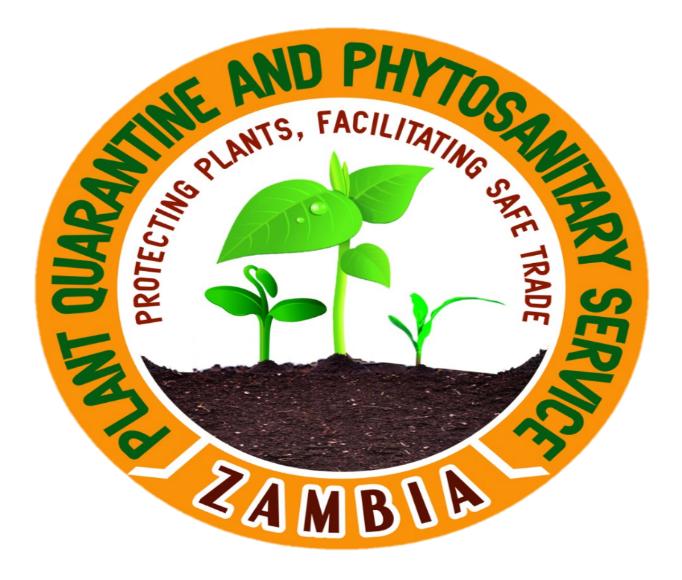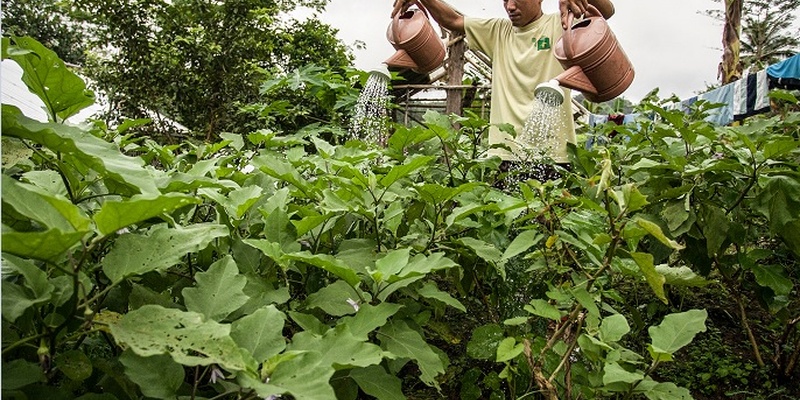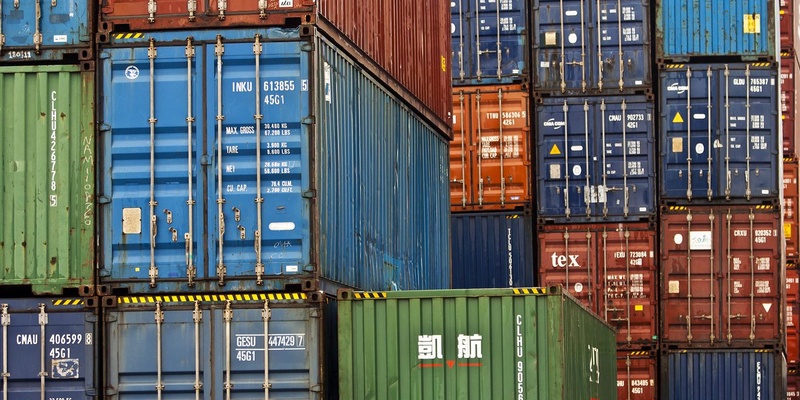Partnerships crucial for protecting plant health
Insights from the CGIAR Plant Health Initiative reached new audiences at the first ever International Plant Health Conference. CGIAR research centers involved in the OneCGIAR Plant Health Initiative joined forces at the International Plant Health Conference in London on September 21-23, 2022 to highlight the importance of global partnerships in effectively preventing and managing devastating pest and disease outbreaks in the Global South. In an interactive side event on Plant Health Management in the Global South through Partnerships on September 21, the Plant Health Initiative team presented on and discussed: global diagnostic and surveillance systems against plant pests and diseases; risk assessment and preparedness for proactive response; integrated pest and disease management; mycotoxin mitigation strategy; and gender and social inclusion. The CGIAR Plant Health Initiative, launched in January 2022, aims to protect agriculture-based economies of low and middle-income countries in Africa, Asia and Latin America from pest and disease outbreaks in major crops by leveraging and building viable networks across an array of national, regional, and international institutions. Building on a track record of more than 50 years of impactful research, the Plant Health Initiative aims to develop and deploy solutions through partnerships, and to achieve impacts that contribute towards several Sustainable Development Goals (SDGs). Healthy crops for a healthy planet Showing the strength of partnerships in action, researchers from the International Maize and Wheat Improvement Center (CIMMYT), Alliance Bioversity-CIAT (ABC), the International Institute of Tropical Agriculture (IITA), the International Potato Center (CIP), and the International Food Policy Research Institute (IFPRI) highlighted the Initiative’s activities and sought feedback from the plant health experts participating in the session. Martin Kropff, CGIAR Science Director of Resilient Agrifood Systems, welcomed the participants to the session. Prasanna Boddupalli, CGIAR Plant Health Initiative Lead & Director of CIMMYT’s Global Maize Program, introduced the Initiative and its scope, emphasizing the inclusive partnerships. This was followed by presentations from Monica Carvajal (ABC), Lava Kumar (IITA), Alejandro Ortega-Beltran (IITA), Nozomi Kawarazuka (CIP), and Yanyan Liu (IFPRI). Time was dedicated to engaging participants through Mentimeter polling on specific questions related to plant health management. Participants also shared their views on plant health research coordination, capacity strengthening, and knowledge exchange between the Global North and Global South, with a focus on improving food security and livelihoods of smallholders. The event was successful not only in generating greater understanding of the Initiative amongst the participants, but also in developing significant interest from the participants to contribute to the Initiative’s goals with collective actions, all for the benefit of smallholders in the low- and middle-income countries of Africa, Asia, and Latin America. Establishing wider networks for plant health The Plant Health Initiative team, together with Kropff, also had a productive discussion on September 22 with Osama El-Lissy, International Plant Protection Convention (IPPC) Secretary, on opportunities for joint actions on plant health management in the Global South by IPPC and the CGIAR Plant Health Initiative, together with national partners. Boddupalli also participated in a workshop on September 20 organized by Euphresco, a network of organizations that fund research projects and coordinate national research in the phytosanitary area, at the Department of Environment, Food & Rural Affairs (DEFRA) in the United Kingdom, on shaping global plant health research coordination. The workshop participants discussed and endorsed several actions for advancing global plant health research coordination. This piece was produced by By Sarah McLaughlin Article originally published on https://www.cimmyt.org/.
Supply chains must mitigate threat of invasive species, for all our sakes
Posted on Tue, 04 Oct 2022, 14:23 Interview with IPPC Secretary for The Loadstar. Climate change and international trade are combining to put the very existence of life on Earth at risk. That is not a crazy unfounded risk assessment by a dogmatic green activist, but the considered opinion of the United Nation’s Food and Agriculture Organization (FAO). And the UN says that changes that will protect food and agriculture supplies must come soon. The International Plant Protection Convention (IPPC) is an intergovernmental treaty signed by more than 180 countries, and its secretary, Osama El- Lissy, along with Nicola Spence, the UK’s chief plant health officer, released a paper on 21 September warning that some 40% of crops, around $220bn worth, is lost to plant pests every year. Mr El Lissy told The Loadstar a further $70bn is spent by the private sector working with national jurisdictions to contain the spread of invasive pests, bringing the total cost of disease and the spread of pests to a little under $300bn. “Climate change has increased pest incursions, particularly in new places where they had not been detected previously but have now thrived. Changing temperatures, humidity, light and wind are the second most important factors for pests to disperse, next to international travel and trade,” wrote Ms Spence and Mr El Lissy. The convention introduced International Standards for Phytosanitary Measures (ISPMs) as its main tool to achieve its goals to reduce the spread of pests and diseases, making it the sole global standard setting organisation for plant health. Plants provide 80% of our food and 98% of the air we breathe, are critical to life on Earth and must be protected at all costs. ISPM’s have the aim of protecting global plant resources from the spread and introduction of pests while also promoting safe trade. With international trade identified as one of the key factors in the spread of invasive species, organisms that, when taken from their natural habitat and moved to an area where they have few or no natural predators, can wreak havoc on local flora and agriculture. Established in 2005 the Commission on Phytosanitary Measures (CPM) is effectively the governing body of the IPPC and is a panel of experts that meets annually to coordinate the global protection of plants. In addition, this year the IPPC held a conference in late September, preceded by the Sea Containers Workshop, which included experts from the IPPC and the transport and logistics industry working to mitigate the risks posed by the spread of invasive species. Moving food around the globe is necessary to feed the parts of the world where food is scarce, explained Mr El Lissy, “The trick is how can we do this in a safe manner so that invasive pests and diseases are not moved along the pathway of agricultural products and food?” Focusing on global supply chains, Peregrine Storrs-Fox, risk management director at TT Club, believes: “The question is around containerisation, what is the level of the risk played out in containers and that’s difficult to identify? Containers aren’t the only pathway for invasive pests.” For Mr Storrs-Fox. everyone can see the problem and believes containerisation has played a role in the spread of invasive species, but we need to know “the level of contribution to the problem and, therefore, what are appropriate, proportionate measures to take.” In addition, he said one of the key messages the “IPPC was careful to state” was that, while the convention wants to mitigate the threat from invasive species, it recognises that mitigation must come “without significant impact on trade flows and logistics”. Although the extent of the problem from containerisation cannot currently be accurately identified, the Sea Containers workshop did agree on a number of issues, according to the CEO of the International Cargo Handling Coordination Association (ICHCA), Richard Steele. “The two sides weren’t miles apart,” he said. One of the discussions centred around the design of the ubiquitous transport container, “the optimum design for a container is egg shaped”, laughed Mr Steele, with the more serious point that many containers have wooden floors and many indents and pockets for pests to hide in. “Customs and excise don’t want voids where things can be hidden,” explained Mr Steele, and things can hide, such as smaller organisms, spiders, moths and their larvae. But he conceded that slots for forklift blades and the corner blocks where twist locks and crane spreaders hold and lift boxes remain crucial to the design. Though both Mr Steele and Mr Storrs-Fox concede that while it is not possible to completely eliminate all movement of invasive species, there are simple actions that can be taken to reduce their spread. “All-steel floors in containers does not add significant cost to its price,” said Mr Steele. However, if a container is loaded at night under lights, these attract pests and can lead to unwanted organisms entering the box. Other mitigation that could be taken is the use of new coatings that prevent, or at least deter, organisms from attaching themselves to the outside of containers. Nevertheless, the chief method for containing the spread of unwanted pests in and on containers is to “continue to raise awareness throughout the supply chain, because there are people that are not aware of these problems”, explained Mr Steel. Asked if fumigants were a part of the answer – a method recently favoured by Chinese authorities to control the spread of Covid in particular – Mr Storrs-Fox and Mr El Lissy’s views were closely aligned. In the opinion of the TT Club, fumigants can cause sickness, but also the nature of supply chains is that they are cross-border, so fumigating in one country may help to get rid pests at that point, but there is a need to ensure that the entire supply chain is protected. “We need to have someone looking over all of this [the supply chain and the various interests],” explained Mr Storrs-Fox, “there’s a silo looking at plant protection and their interests, then you need to look


